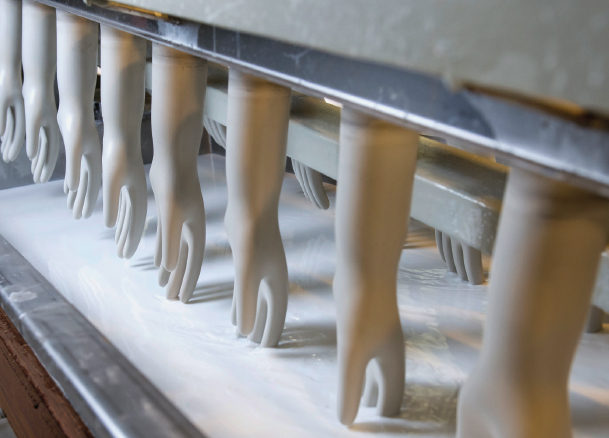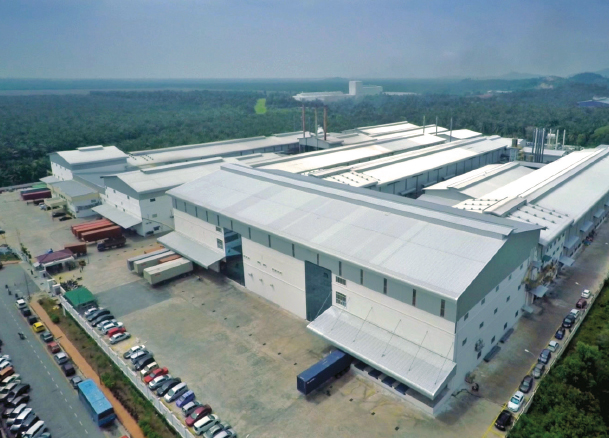
This article first appeared in Digital Edge, The Edge Malaysia Weekly on March 29, 2021 - April 4, 2021
The push towards advanced technologies has been a key theme in the Malaysian corporate sector, even before the Covid-19 pandemic came along and turned it into a necessity.
And this is even more apparent in the rubber glove industry, which has seen a surge in business stemming from increased global demand because of the pandemic.
The share prices of most of the rubber glove-related counters have skyrocketed as a result. The combined market capitalisation of the glove counters on the local bourse had more than tripled from RM44.43 billion in early February last year to RM140.22 billion in December.
Global demand for rubber gloves is set to hit 420 billion pieces in 2021, about 16% higher than the previous year, according to the Malaysian Rubber Glove Manufacturers Association (MARGMA).
Malaysia was already satisfying almost 70% of the entire world’s demand for rubber gloves before the pandemic. With the spike in global demand, MARGMA expects the global shortage of rubber gloves to last beyond the first quarter of next year. All eyes are now on how the glove industry will cope with these large orders, as well as on the technologies that enable the companies to do so.
Kossan Rubber Industries Bhd is one such company, but its CEO and group managing director Tan Sri Lim Kuang Sia did not need the pandemic to apprise him of the importance of digital transformation. In fact, the company has been going through one for the past seven years, Lim tells Digital Edge.
In 2017, Kossan even announced plans to completely overhaul its plants for automation by 2020, with the goal of reducing the company’s dependency on uncertain elements — chief of which is the availability of human labour.
At this point in time, Kossan’s glove manufacturing process has yet to achieve the highly coveted fully automated status. It has made great progress, however, almost halving its employee count per glove manufactured from four years ago.
“In the early days of the company, manufacturing a million individual gloves usually required five to six employees. In 2017, we managed to lower that number to about 3½ employees per million pieces,” says Lim.
“With the equipment in our new plant, we are currently looking at about 1.8 employees per million gloves manufactured. Once our automated packaging system is fully installed, we are looking at lowering the number to 1½.”
These improvements in production efficiency are attributed to the new array of equipment used to automate parts of the glove manufacturing process in the facility. For example, all of Kossan’s production dipping lines for gloves are designed with an automated stripping system, to automatically reverse and remove the gloves from the formers (moulds in the shape of hands) once they have completed the dipping process.
Kossan is in its final stages of automating the packaging process of sterile gloves, which are susceptible to contamination when manually handled.
The automation machinery includes a glove walleting packing machine, which automatically wraps the cuffed gloves into individual wallets; a platen seal pouching machine with a production speed of up to 75 pouches per minute; and a form fill sealing machine, which prints graphics and texts onto the pouches.
Talent versus labour
Lim says the company has been placing emphasis on reducing its reliance on unskilled labour for many years now, and its hard work has started to bear fruit.
“We are not just trying to solve the business challenges of today, but also future challenges that will appear in the next number of years, and we have long since viewed labour supply as a huge problem for the industry,” says Lim.
“We believe there is no room for labour-intensive businesses in Malaysia. This may not have been an issue 10 years ago, but the quality requirements for gloves have become stringent and automation plays an important role in doing away with a lot of the human errors found in the production process.”
Lim adds that automation has improved the quality consistencies of the gloves produced, which is vital in the medical industry. He also points out that human labour is a cost centre for many companies, where workers’ salaries can only trend upwards and supervisors need to be employed to manage the workers.
Thanks to these automation exercises, the production lines now operate 24 hours a day, manned mainly by a few technicians and engineers making sure the machines are running properly. Once the packaging system is fully automated, Lim expects to remove 60% of the labour involved in the glove packaging process.
Asked what would happen to the general workers whose jobs are made redundant by automation, Lim hastens to say they will not be retrenched. Instead, they will be retrained to work in other divisions of the company.
While the demand for low-quality labour is diminishing, the industry is facing a short supply of high-value well-educated talent, especially now that the industry is rapidly expanding. Thus, Kossan has established an in-house training unit focused on upgrading existing talents to work at high-value parts of the business while also shifting their sights to employing well-educated local talents.
“Even with the talent pool in the job market right now, it is hard to find and employ the right people for the job who are familiar with the glove industry. This is why we decided to train our own people in-house, so that they can add value to the company and obtain a better salary — a win-win situation,” says Lim.
Lim tells Digital Edge that automating the business is a very difficult process because it is hard to find local expertise to help guide them through the process. Thus, the automation systems Kossan has employed were mostly designed in-house, and it outsourced the software development only to a German partner.
“This is not a simple case of accepting government grants and incentives, and the whole industry can transform overnight. We need more support in terms of talent and expertise but, unfortunately in Malaysia, there is a distinct lack of it,” he says.
“Automation is not a simple product that you can purchase off the shelves. Trying to get help from people outside the company to automate is difficult. So, we have to hire experts to join us or train them ourselves. I believe this problem is not unique to us, but faced by businesses and SMEs (small and medium enterprises) in Malaysia in general.”
Lim points out that many companies in Malaysia approach business automation incorrectly, choosing to outsource parts of the business process to other companies and third-party service providers while considering that as automation.
During an economic downturn similar to the current pandemic, where non-performing companies are required to lay off staff members, the corporate liability of retrenchment merely shifts from the client company to the contracted company.
Lim says true automation is where economies reduce their dependence on manual labour across the board in favour of technology and automation, shifting instead to highly skilled workers doing more productive work, a goal that the Malaysian economy should strive for.
Beyond production lines
According to Lim, Kossan has not merely focused its attention on automating its production lines, but rather on digitalising the business as a whole.
For the past two to three years, the company has tried to upgrade its enterprise resource planning (ERP) system, which has been postponed this year by six months because of the pandemic.
Through the newly upgraded ERP system, Lim hopes to digitalise every process in the company and have a comprehensive overview of its operations, while also being able to communicate with the entire company easily from his own office.
Lim says this is why it is important to approach automation in stages, rather than fully automating every part of the business in one go. To be able to install Internet of Things (IoT) devices and collect data to be displayed in the ERP system, the production lines need to be automated first.
“If we take a Western approach to automation, the main goal is full automation from the get-go and companies would need to invest heavily in technological assets, with some SMEs urged to scrap their old machinery altogether,” says Lim.
“Malaysia’s manufacturing industry is similar to how it was in China 10 to 15 years ago. At first, it will be a simple robot arm installation or a conveyor belt system, automating 10% of the production line at a time, stage by stage, achieving full automation after only six or seven years.”
With the entire glove production process almost fully automated, next on Kossan’s priority list is establishing a robust data infrastructure within the company. Lim says the company is now focusing on finding ways to collect high-quality data and wrangling it to prepare it for analysis to meet certain business objectives and requirements.
Production data collected from IoT devices can be used to track the glove manufacturing process from start to finish. The data can then be analysed with the help of artificial intelligence (AI) to identify inefficiencies in the production process, which can then be rectified.
Purchasing data from the finance department can also be used to compare the quality and prices of raw materials provided by suppliers while factoring in foreign exchange currency movements, allowing the company to make much more informed purchasing decisions.
Lim points out that the data collected is not limited to the company itself. Information such as economic data, consumer purchasing trends and product prices from different countries, while traditionally beneficial to retail and trading companies, has now become increasingly important for the manufacturing industry’s sales and marketing departments as well.
“Using data to improve the processes and the quality of our products is what we need to do to remain competitive in the market — because, to remain competitive, the cost, quality and after-sales service of your product have to be right. So, it is important to have data as part of your company’s roadmap if you want to remain competitive,” he says.
Save by subscribing to us for your print and/or digital copy.
P/S: The Edge is also available on Apple's App Store and Android's Google Play.




